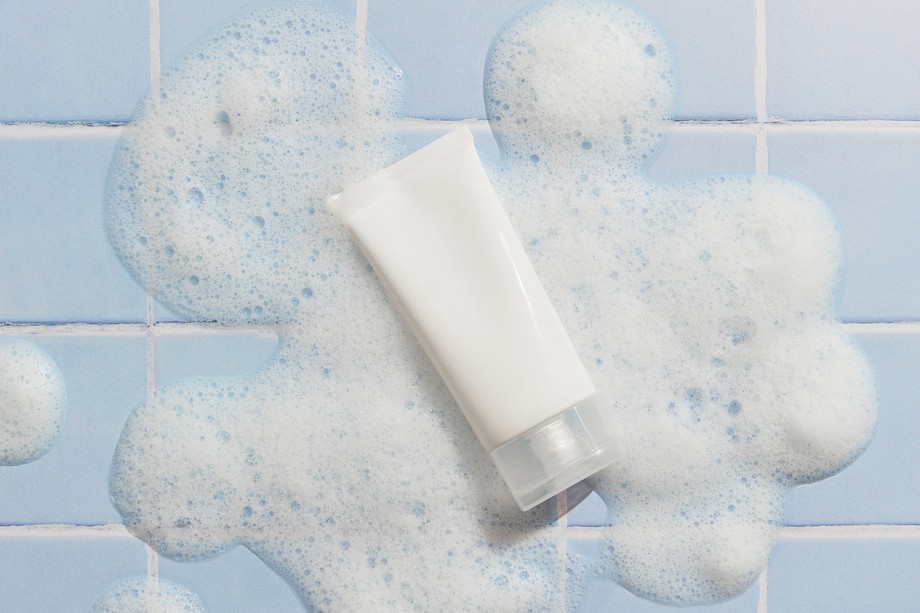Why does shampoo foam? What makes dishwashing liquid remove grease from various surfaces? All these properties are the result of the action of surfactants, i.e. surfactants - what are they and what are their applications? Let's find out the answers.
Surfactants: definition and division
The term surfactants covers a group of aqueous solutions of chemical compounds, composed of:
- hydrophobic elements (hydrocarbon groups),
- a hydrophilic part (containing an acid residue, similar to polar liquids).
Both elements form a distinctive comet-like structure with a long hydrocarbon tail and a hydrophilic head.
There are 4 basic groups of surfactants. These are compounds:
- anionically active,
- cationically active,
- amphoteric,
- non-ionic.
Do surfactants soften hard water?
Surfactants are a great adsorbent and bind molecules at the interface. Their unique structure causes them to lower the phase tension and change the surface charges at the interface of different substances. And what happens when we combine hard water and surfactants? Surfactants then do not foam well and we have to increase their amount to get the desired results. Therefore, manufacturers of household chemicals use special additives in the form of hard water softeners. For example, for surfactants in detergents, industrialists use an aqueous solution of sodium salts of acrylic maleic copolymer.
Anionic surfactants
A large group of surfactants are anionic surfactants. What is it ? These ionic compounds with an anionic hydrophilic group have a foaming, wetting, washing and emulsifying effect. What substances are included in this group? These include:
- Sodium Laureth Sulfate (sodium lauryl sulfate, C12-C14),
- Sodium 2-ethylhexyl sulfate (sodium salt of 2-ethylhexanol sulfate),
- Sodium salt of decyl alcohol (sulphated decyl alcohol),
- Sodium Dodecylbenzenesulfonate (sodium salt of alkylbenzenesulfonic acid).
An example of the use of an anionic anionic compound is soap (liquid or bar). Anionic surfactants can also be found in washing powder and in many household cleaning and washing agents. They are widely used by producers of the cosmetics, textile and fuel industries.
Cationic surfactants
Another group of surfactants are cationic surfactants. In aqueous solutions, they dissociate into cations and anions (acidic residue). The category of cationic surfactants includes, for example:
- benzalkonium chlorides (disinfectant),
- cetyltrimethylammonium bromide (bactericidal).
Cationic compounds are characterized by low foaming, they also have poor washing properties. Their main advantage is that they effectively prevent the phenomenon of electrifying hair (so they often appear in the composition of conditioners, shampoos and nourishing masks).
Non-ionic surfactants: what is it?
Non-ionic surfactants are of great importance in the cosmetics and chemical industries. These are compounds devoid of ionic charges. They are widely used in the chemical, textile, lubricants and metallurgy industries. Some non-ionic surfactants are also used in the production of emollients and other care cosmetics.
Nonionic surfactants: examples
Many examples of non-ionic surfactants can be found on the market today. These are, for example:
- Laureth-7 from the group of ethoxylated fatty alcohols (poor foaming, excellent emulsifying and wetting properties),
- Alkylamine (type PEG-5 Hydrogenated Tallow Amine: ROKAmin SR5 with emulsifying and detergent properties),
- C12-15 Pareth-9 (well soluble in water, foams very well, has a wetting, detergent and degreasing effect),
- PEG-75 Lanolin (ROKAnol LN75/50, works comprehensively: emulsifies, moistens, washes and conditions).
Amphoteric surfactants
Modern production of surfactants also includes amphoteric surfactants, such as alkyl betaines or sulfate betaines. They are one of the most delicate and harmless substances, mainly used in:
- cosmetics, among others for the production of children's shampoos and preparations for intimate hygiene,
- auto detailing (production of car shampoos).
Amphoteric agents exhibit excellent foaming properties, dissolve well in water and improve the density of other substances. An example of such a product is Cocamide DEA, i.e. diethanolamide of fatty acids from coconut oil. It is a co-surfactant with a wide range of applications: it works well as an ingredient in shampoos, gels and lotions.
Do you want to learn more about the properties and applications of surfactants? We encourage you to read our blog. We also provide a lot of useful information on product cards in our store.

